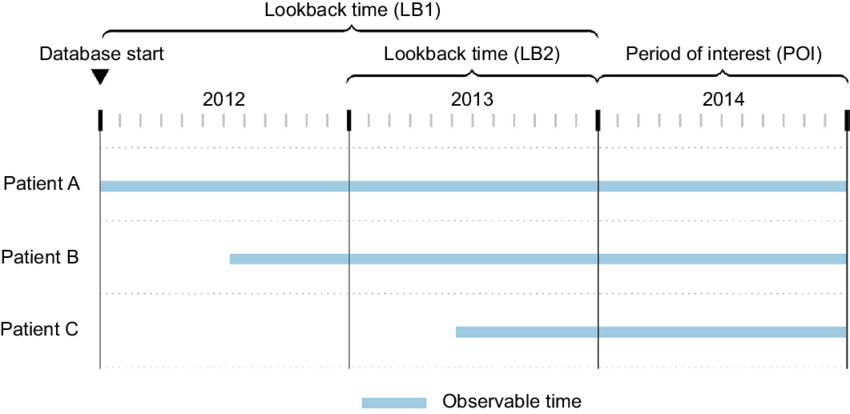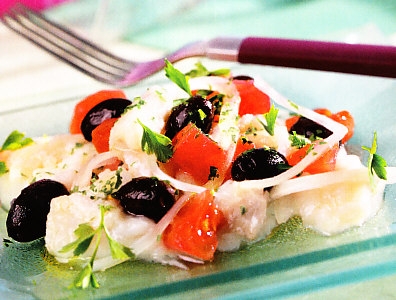Attending one of the world-famous festivals in Spain is an unforgettable way to immerse yourself in Spanish culture.
This feria range from religious and traditional festivals to a particularly unique festival akin to a giant food fight (stay with us – we’ll get there). Read on for the best festivals in Spain and how you can get involved.
Contents hide
Traditional Festivals and Celebrations in Spain
3. Fiesta de San Isidro – Madrid
6. Fiesta de la Mercè – Barcelona
8. La Tamborrada de Donostia – San Sebastián
Traditional Festivals and Celebrations in Spain
Most towns and cities in Spain host an annual feria in honor of its patron saint. These dates vary although they often fall in June. Wherever you’re planning on traveling in Spain, it’s worth having a quick Google to see if your itinerary overlaps with a smaller festival.
While these aren’t the most famous festivals in Spain per se, they do provide an insightful perspective on regional and local customs beyond the major cities.
9 Famous Festivals in Spain
Beyond the patron feasts, these are the biggest traditional festivals in Spain that you can experience as a tourist.

The different monuments that are made for Fallas are always almost too beautiful to burn.
1. Las Fallas – Valencia
Las Fallas is one of the largest annual celebrations in Spain. This is held in Valencia every March in honor of the patron saint, San José (Saint Joseph). The name refers to sculptural monuments – fallas – painstakingly crafted out of wood and papier-mâché. Displayed all over the city, these depict happenings from current affairs and are often satirical.
On the final evening of Las Fallas, these effigies are burned in a sequence of public bonfires. As the festival also celebrates the arrival of spring, the burning has its roots in a tradition where Spanish families would burn old furniture to welcome the close of winter. The sheer uniqueness of this epic festival has seen it declared an Intangible Cultural Heritage of Humanity by UNESCO.
In general, Las Fallas events start on the last Sunday in February and a countdown begins on 1 March when mascletàs are fired daily in the City Hall Square. This is a loud explosion of gunpowder that without prior notice might give you a bit of a shock!
The planting of fallas figures generally starts around 15 March and concludes on 19 March when the festival ends with ceremonial cremà (burning). With tons of street partying, firework displays, and out-of-this-world energy, Las Fallas is one of the best festivals in Spain to plan a vacation around.

Be sure to explore all of the different sites in Seville while you’re visiting for the festival, it’s one of my favorite cities in all of Spain!
2. Feria de Abril – Seville
There’s already a ridiculously long supply of cool and cultural things to do in Seville but if you visit during April you can add one more item to the list.
What was once a humble cattle fair, the Fiera de Abril (April Fair of Seville) is a week-long celebration of everything we know and love about Andalucia.
Therefore, the city erupts with flamenco displays, free-flowing sherry, and horse-drawn carriages carting merry Sevillians around the city. This is also a wonderful time to spot people donning traditional costumes.
Much of the activity takes place at the designated Real de la Feria where pop-up casetas (dining tents) are laid out. The Feria de Día is more mellow while the Feria de Noche is a riot where galleons of rebujito sherry cocktails are sunk. However, the Fiera de Abril counts as one of the most family-friendly Spain festivals with kids often present until the early hours.
Now, most of the casetas are privately booked and strictly invite-only. It’s not uncommon for a traveler or expat to gain an invitation but it really depends on luck. However, there are usually a couple of public casetas. Formal dress is an absolute must and you might even want to rent a traje de gitana ensemble.
Even if you don’t wrangle an invite to one of the most exclusive celebrations in Spain, the atmosphere in Seville is a wonder to experience. The dates of the Fiera de Abril change but it usually occurs roughly two weeks after Semana Santa (Easter).
3. Fiesta de San Isidro – Madrid
The Fiesta de San Isidro is one of the big religious festivals in Spain held in honor of a city’s patron saint. In the case of San Isidro Labrador, we’re talking about Madrid: this makes it one of the most important Spain festivals.
San Isidro, a farm laborer, was believed to work miracles during the 12th century, particularly where water is concerned. In fact, his namesake park on the left bank of the River Manzanares contains a fountain and pond in memory of his deeds. In fact, visiting San Isidro Park is one of the best things to do in Madrid with a longer itinerary.
Madrid continues to observe the holy element of the festival while celebrating the city in general. Madrileños don traditional costumes and dance the chotis to folk music while street food stalls flood throughout the city center. Open-air concerts transform Plaza Mayor while residents flock to the park to pay their respects
Held annually, the Feast Day of San Isidro falls on 15 May. As the city is very busy during the week leading up to the grand finale, you’ll need to plan your Madrid itinerary carefully and pre-book accommodation. If your trip doesn’t fall during the festival, you can still learn all about it at the Saint Isidore Museum.

Madrid is full of fun parties and activities throughout the year, but San Isidro is the biggest.
4. La Tomatina – Buñol
Now for one of the craziest celebrations in Spain. La Tomatina is an annual festival that takes place in Buñol, a small town near Valencia you’d be forgiven for not knowing anything about.
The origins of the festival date to late August 1945 although the specifics are unknown. It’s thought that a fight broke out during the Procession of Giants and Big Heads. Supposedly, something went down and the participants and attendees grabbed fruits and vegetables from a market stall to pelt at each other. Tomatoes were the favored choice of arms.
The food fight repeated itself the following year as a planned battle. Thus, La Tomatina was born. Although banned in the 1950s, this didn’t stop the townspeople of Buñol who fought to have the festivities made an annual event. Nowadays, it’s a full-fledged festival where tomatoes are literally trucked in especially.
It’s extremely popular and ticketing measures have been integrated to ensure the attendee numbers are capped at 20,000. In addition, there are a couple of ground rules now in place to keep La Tomatina safe, friendly, and unforgettable.
Situated 24 miles (38 km) west of the City of Arts and Sciences, you can visit Buñol as a day trip from Valencia. It takes place every year on the final Wednesday of August. This is one of the most tourist-friendly famous festivals in Spain. Just make sure you have a change of clothes for the bus ride back east.
Book your tickets online for La Tomatina and make a note of the rules.

If you only go to one carnival in Spain, it should be at Sitges.
5. Sitges Carnival – Sitges
Sitges is a laid-back coastal town on the Catalan coast. Visit this lovely town on a day trip from Barcelona and you’ll enjoy beaches, seafood, and art. Head there during February and you’ll encounter one of the best festivals in Spain for carnival parades, dazzling costumes, and unbridled fun.
Sitges Carnival – along with other similar events nationwide – marks the beginning of Lent in Spain. Kicking off with the fabulously flamboyant “Arrival of the King” parade, the carnival lasts a week. The events share the same theme of letting loose ahead of the Lent period. It concludes with the Burial of the King where a farewell procession is followed by beach bonfires and late-night partying.
Sitges Carnival is one of the most famous festivals in Spain for an LGBTQIA+ atmosphere. It’s an inclusive and energetic affair with appeal to all types of travelers – including children during the day.
Note that due to the popularity of the carnival, accommodation books out in town super fast.
6. Fiesta de la Mercè – Barcelona
While Madrileños celebrate San Isidro, the Barcelonians honor Our Lady of Mercy – the Virgin of Grace. Therefore, the Fiesta de la Mercè is another of the largest religious festivals in Spain.
The Virgin of Grace was deemed responsible for helping rid Barcelona of a locust plague during the 17th century. Ever since the festival has been held every year. While religion is the root, the Fiesta de la Mercè is another of the famous festivals in Spain where traditional and modern culture is celebrated.
In fact, the activity is a wider celebration of the Catalan region. Incredible street parades see puppetry processions alongside gravity-defying Castellers (towers of humans).
The Fiesta de la Mercè is basically one huge display of visual and circus arts, music, and theater. Events occur all over the city although Plaza Cataluña is a nucleus of happenings. It’s impossible to avoid the action if your Barcelona itinerary coincides with the festival.
Best of all, most of the activities don’t cost a dime. Therefore, this is one of the best free things to do in Barcelona.
Barcelona celebrates the Feast Day of Our Lady of Mercy on 24 September. As with other grand-scale celebrations in Spain, the build-up starts around a week in advance.

You can’t miss out on exploring some of the big sites while visiting Barcelona for this famous festival in Spain.
7. Semana Santa – Nationwide
As a predominantly Roman Catholic country, Easter is one of the most important religious festivals in Spain. Celebrated as the Semana Santa (Holy Week), this springtime festival takes over the entire country. However, every region, city, and town marks the event with its own special customs.
Wherever you are in the country, you can expect to find a mixture of street processions and church masses. The parades are made up of nazarenos (penitents) bearing candles, wooden crosses, and floats. As an example of how cities personalize Semana Santa, flamenco costumes and singing are woven into the Seville celebration of Easter.
All in all, Semana Santa is one of the traditional festivals in Spain shared with family. However, travelers can get in on the action via typical Easter Time food. Lots of sweet treats and cakes crop up in bakeries and restaurants around Holy Week.
One of the tastiest traditional breakfast foods in Spain, torrijas (fried sweet bread), makes an appearance during Semana Santa. This dish is made of slightly stale bread fried in a mix of milk, eggs and oil before being sprinkled in cinnamon sugar and slathered in honey.
Semana Santa is held in conjunction with Easter in other Christian countries. Officially, that winds up being the first Sunday after the first full moon following the spring equinox. Easter Sunday marks the end of the religious festival.

Views over Barcelona on a calm morning after the chaos.
8. La Tamborrada de Donostia – San Sebastián
While it might not be one of the most famous festivals in Spain, La Tamborrada de Donostia (Donostiako Danborrada in the Basque language) is the noisiest.
This 24-hour festival takes place between 19 and 20 January in San Sebastián. At the stroke of midnight, the mayor raises the city flag in the Plaza de la Constitución (Konstituzio Plaza). Participants take to the streets with marching drums until the flag is lowered at midnight the following evening.
What makes this festival particularly interesting is that many of the participants dress as cooks and soldiers.
This festival is thought to have originated following the Napoleonic Wars. During the French occupation, soldiers would march the streets beating their drums as the townswomen went to collect water from the fountains. In order to get one up on them, Donostiarras took to banging various kitchen utensils to wind up the soldiers.
Following the end of the wars, drumming then became a staple of Donastia’s patron saint day celebrations. As a result, the modern festival is a symbol of camaraderie and residence. This fleeting yet thrilling showcase of music is free to attend and all are welcome.

The running of the bulls is not for the faint-hearted.
9. Sanfermines – Pamplona
Perhaps you know this famous festival by a different name, the Running of the Bulls.
Sanfermines is one of the most famous festivals in Spain. Held in Pamplona, the Festival of San Fermín is held in honor of the patron, Saint Fermin. It starts at noon on 6 July with a special firework exhibition called chupinazo. After this, a sequence of street events take place lasting a total of nine days ending at midnight on 14 July.
These activities include Riau-Riau dancing, street parades, musical performances, rejoneo and other bullfights, and the most famous part of the festival, the “Running of the Bulls” races.
Sanfermines draws to a close with the Pobre de Mi (Poor Me) ceremony. Crowds bearing candles gather in Plaza Consistorial to chant “Pobre de Mi” in recognition of the end of another San Fermin Festival.






